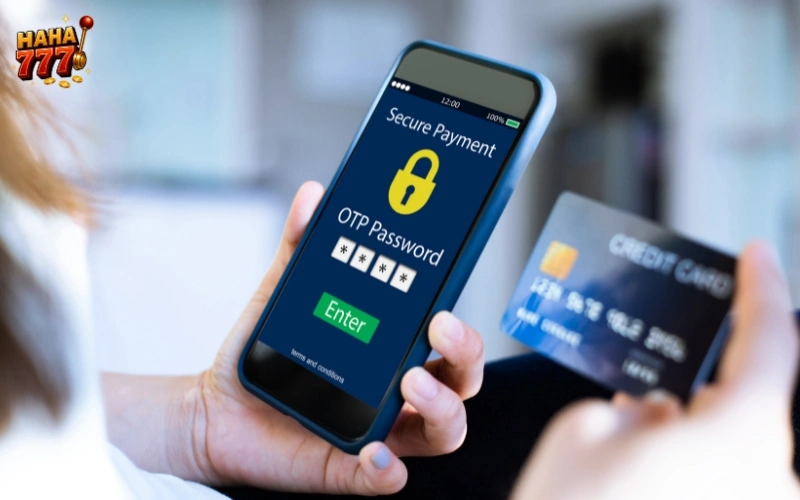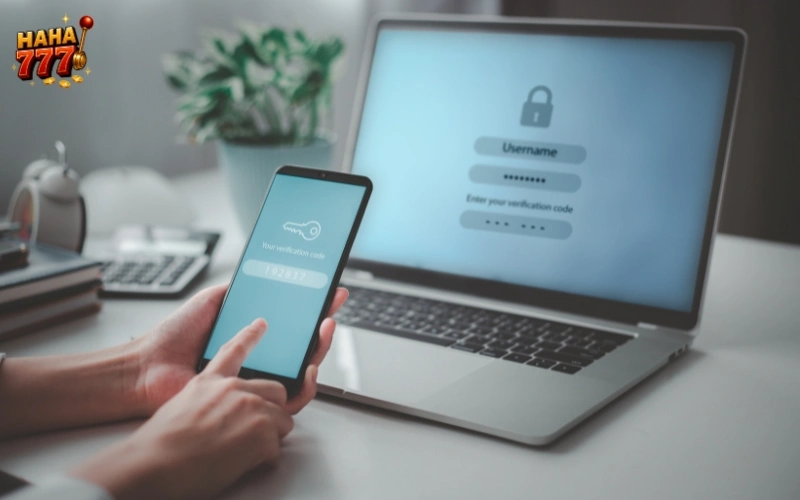Security with thousands of users accessing Haha777 daily for casino, sports, and slot games, protecting your personal and financial information is a top priority.
That’s why Haha777 has implemented advanced OTP (One-Time Password) verification and multi layered security protocols to safeguard every player account. In this guide, we’ll walk you through how OTP works, how to enable it, and essential tips to help you stay secure while enjoying your favorite games without worry.
Why does Security matter at Haha777?
At Haha777, player safety is our top priority. From encrypted data transfers to multi factor authentication, we provide a safe and trustworthy gaming environment for all Filipino users.
With increasing cyber threats and phishing attempts, knowing how to secure your account is the first step to enjoying uninterrupted gameplay and fast withdrawals.

What Is OTP and how does it work?
OTP (One-Time Password) is a 6-digit temporary security code sent to your mobile number or email during sensitive actions, such as:
- Step 1: Logging in from a new device.
- Step 2: Withdrawing funds.
- Step 3: Changing your password or personal info.
Each OTP is unique, time limited and adds an extra layer of protection beyond your regular login credentials.
Example: You log in to Haha777 on a new phone → you’ll receive a 6-digit OTP via SMS → enter it to verify your identity.
How to enable and use OTP at Haha777?
Follow this step-by-step guide to activate OTP on your Haha777 account:
- Step 1: Visit Haha777 website and enter your username and password to access your personal dashboard.
- Step 2: Once logged in, locate and click on the “My Account” or “Profile” section (usually found in the top-right menu).
- Step 3: Within the account panel, select the tab labeled “Security Settings”. This is where you can manage all security-related features, including password changes and two-factor authentication options.
- Step 4: Look for the OTP or Two-Factor Authentication (2FA) option. Toggle the switch to “Enable” for the actions you want to protect:
- Login.
- Withdrawals.
- Changing password or contact details.
- Step 5: You’ll be prompted to input and verify your mobile number or email address where the OTP will be sent.
- Step 6: After entering your information, click “Confirm” or “Save Changes”. You may be required to input an OTP immediately to complete the activation process.
Once OTP is enabled:
- Every time you log in from a new device, change security details, or request a withdrawal, a unique 6-digit OTP will be sent to your phone or email.
- Simply enter the OTP within the given time frame (usually 60 – 120 seconds) to verify the action.
- If the OTP expires or is incorrect, you can request a new code.

Best security practices for Haha777 players
To maintain a safe and secure gaming experience, follow these essential security practices:
- Create a password that includes uppercase and lowercase letters, numbers, and special characters. Avoid using obvious details like your name or birthday.
- Update your password periodically, especially if you suspect unauthorized access or after using a public device.
- Activate OTP (One-Time Password) for all sensitive activities such as logging in, withdrawing funds, or changing account details. This adds a crucial layer of protection.
- Your account credentials should remain private. Do not share them with anyone, including people claiming to be Haha777 support staff.
- Only access Haha777 via the official website. Be cautious of fake promos, suspicious links, or emails impersonating Haha777.
- If you’re accessing your account on a shared or public computer, make sure to log out completely to prevent unauthorized access.

By enabling OTP and following essential safety practices, you not only protect your personal information and funds but also ensure a smooth and worry-free gaming experience.
At Haha777, we are committed to providing a safe, encrypted, and user-first platform for all players in the Philippines. Take control of your account security today, because your fun should never come at the cost of safety.

